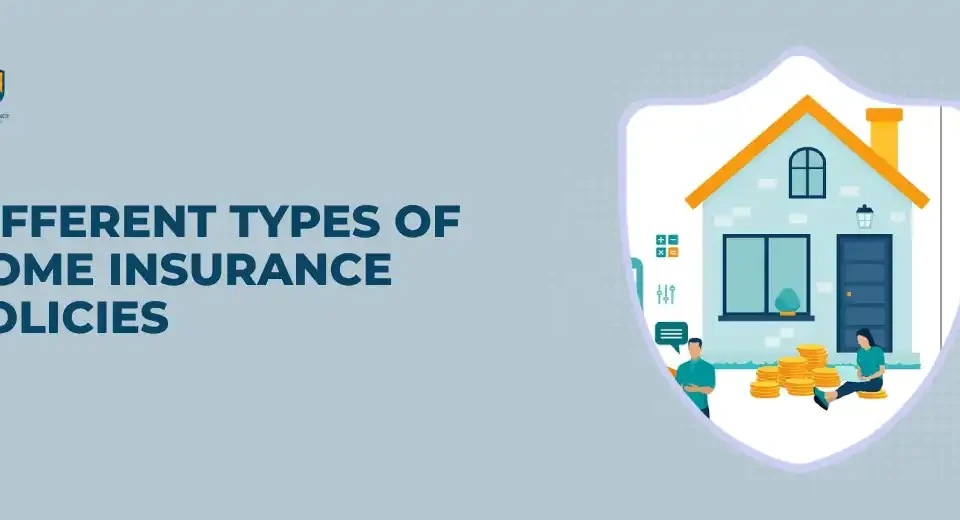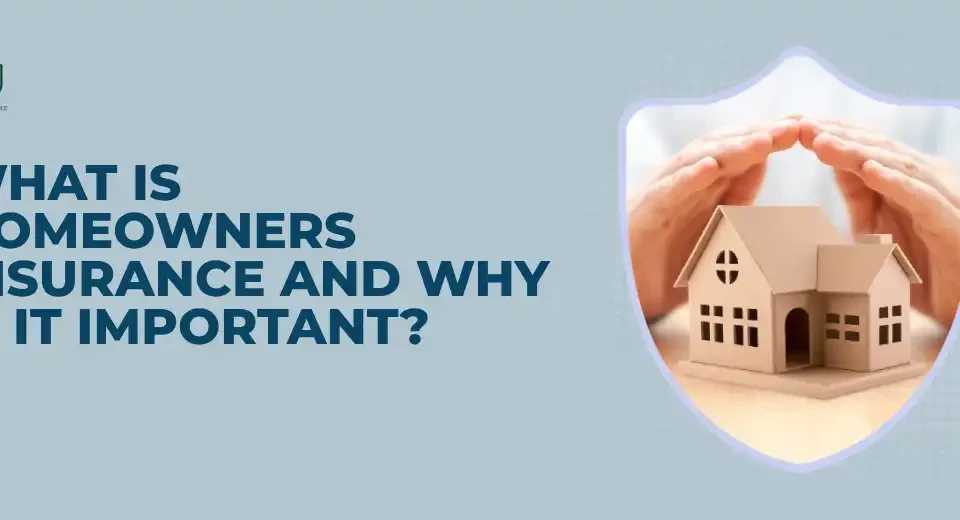How Does Home Insurance Work? A Complete Guide for Homeowners

What Is Homeowners Insurance and Why Is It Important?
April 21, 2025
Different Types of Home Insurance Policies (2025 Guide)
April 29, 2025Understanding how home insurance works is essential for protecting what is likely your most valuable asset, your home. Unexpected events like fire, theft, or natural disasters can cause significant financial loss if you're unprepared.
Home insurance provides a financial safety net by covering damage to your home, personal belongings, and liability for accidents on your property. It ensures peace of mind and long-term stability.
In this guide, I’ll break down how home insurance works, what it covers (and what it doesn’t), and how you can choose the right policy while saving money along the way.
What Is Homeowners Insurance?
Home insurance is a contract that covers your home and personal belongings against damage or loss from events like fire, theft, or certain natural disasters. It also includes liability coverage if someone is injured on your property. By understanding what home insurance is, you can better prepare for unexpected events and avoid major financial stress when issues arise.
What Does Home Insurance Typically Cover?
Home insurance generally protects several key areas:
- Dwelling Coverage: This covers the physical structure of your home, including walls, roof, and built-in appliances, against perils like fire, wind, or hail.
- Personal Property Coverage: This protects your belongings, such as furniture and electronics, if they're damaged or stolen. Coverage may extend to items stored off-premises, up to a certain limit.
- Liability Protection: If someone is injured on your property or you accidentally cause damage to someone else's property, this coverage can help pay for legal fees and medical expenses.
- Additional Living Expenses (ALE): If your home becomes uninhabitable due to a covered event, ALE can cover costs like hotel stays or temporary rentals while repairs are made.
- Optional Add-Ons: Standard policies might not cover events like floods or earthquakes. You can purchase additional coverage for these specific risks.
What Is Not Covered by Home Insurance?
While home insurance offers broad protection, there are specific exclusions that standard policies typically do not cover:
- Maintenance Issues and Wear & Tear: Damage resulting from neglect, aging, or lack of upkeep, such as a leaky roof due to deterioration, is typically not covered.
- Floods and Earthquakes: Standard policies usually exclude natural disasters like floods, earthquakes, and landslides. Separate policies are required for these events.
- Acts of War or Nuclear Hazards: Damage resulting from war, nuclear accidents, or related events is typically excluded from coverage.
- Damage from Pests (Termites, Rodents): Damage caused by termites, rodents, or other pests is generally excluded, as these are considered preventable with proper maintenance.
- Business-Related Damages in Home: Losses related to home-based businesses, including equipment or liability issues, are not covered unless you have specific business insurance.
How Much Does Home Insurance Cost?
Home insurance costs can differ based on a few key factors. Some are within your control, others aren't. Here's a quick breakdown to help you see what affects your premium and how you might save.
|
Factor |
Details |
|
Location |
Areas prone to natural disasters or high crime rates often have higher premiums. |
|
Home Value & Rebuild Cost |
The more expensive your home is to rebuild, the more you’ll pay for coverage. |
|
Construction Materials |
Homes made with fire-resistant or durable materials can lower insurance costs. |
|
Claims History |
Frequent claims (by you or previous owners) can increase your premium. |
|
Coverage Amounts & Deductibles |
Higher coverage limits and lower deductibles lead to higher premiums. |
Average Cost by Region (2024 Estimates)
- U.S. National Average: ~$1,428/year (per Insurance.com)
- Florida: ~$2,300/year (due to hurricanes)
- California: ~$1,500/year (wildfire risk areas)
- Texas: ~$1,900/year (hail, storms, and flood risks)
How the Home Insurance Claim Process Works
If something happens to your home, here’s a simple step-by-step guide to help you understand how to file a claim and get reimbursed.
Step 1: Document the Damage: Take clear photos or videos of all damage as soon as it’s safe. This evidence will support your claim.
Step 2: Contact Your Insurance Company: Report the incident to your insurer right away—either online, through an app, or by calling the claims department.
Step 3: Meet the Claims Adjuster: Your insurer will assign a claims adjuster who may inspect the damage in person or virtually to assess the extent of the loss.
Step 4: Submit Supporting Documents: Provide receipts, repair estimates, or an inventory of lost items to back up your claim and speed up the process.
Step 5: Get Claim Approval and Payout: Once approved, your insurer will issue a payment based on your policy terms, sometimes in multiple installments, especially for major repairs.
Types of Home Insurance Policies (HO-1 to HO-8)
There are different types of home insurance policies designed to suit various home structures and living situations. Here's a breakdown of each policy type:
|
Policy Type |
Description |
|
HO-1 |
Basic coverage that protects against a limited set of perils (fire, lightning, theft, etc.). |
|
HO-2 |
Broad coverage that protects against more perils, such as vandalism and falling objects. |
|
HO-3 |
The most common policy offers coverage for your home and personal property against most risks (with some exclusions). |
|
HO-4 |
Renters' insurance covers personal property and liability, but not the structure itself. |
|
HO-5 |
Comprehensive coverage that offers the broadest protection for both home structure and personal belongings. |
|
HO-6 |
Condo insurance covers personal property and shared property in a condominium. |
|
HO-7 |
Designed for mobile or manufactured homes, offering coverage similar to HO-3 but for mobile properties. |
|
HO-8 |
Tailored for older homes, covering the unique risks associated with older or historic properties. |
How to Choose the Right Home Insurance Policy
Choosing the right home insurance policy involves evaluating your needs, comparing options, and making an informed decision. Here's how to do it:
- Assess Your Home's Needs: Consider factors like home value, location, and potential risks (e.g., flood, wildfire).
- Understand Coverage Limits: Make sure the policy covers enough to rebuild your home and replace your belongings.
- Compare Quotes: Get multiple quotes to find the best price for the coverage you need.
- Insurance Agent vs DIY: Decide if you want to work with an agent for personalized advice or research and choose a policy yourself.
- Questions to Ask: Ask about exclusions, the claim process, and any discounts available before purchasing a policy.
What’s the Difference Between Homeowners Insurance and Property Insurance?
Here's a simple comparison between homeowners' insurance and property insurance to help you understand the key differences:
|
Feature |
Homeowners Insurance |
Property Insurance |
|
Coverage |
Covers home structure, personal belongings, and liability. |
Covers only the physical structure of the property. |
|
Personal Property Coverage |
Yes, includes protection for furniture, electronics, etc. |
No, doesn’t cover personal belongings. |
|
Liability Protection |
Yes, includes coverage for accidents on the property. |
No, liability protection is not included. |
|
Required by Lenders? |
Yes, typically required by mortgage lenders. |
Not typically required unless part of a mortgage agreement. |
|
Best For |
Homeowners, renters, and property owners with personal property. |
Property owners or investors focusing on the building itself. |
Frequently Asked Questions (FAQ)
How much is home insurance on a $400,000 house?
The average annual cost for homeowners insurance on a $400,000 house is approximately $3,231, or about $269 per month.
How does home insurance payment work?
Homeowners typically pay their insurance premiums monthly, quarterly, or annually. If you have a mortgage, your lender may collect the premium through an escrow account and pay it directly to the insurer.
Is home insurance paid monthly?
Yes, homeowners insurance can be paid monthly, quarterly, or annually. If you have a mortgage, your lender may include the premium in your monthly mortgage payment through an escrow account.
What does home insurance not cover?
Standard home insurance policies typically do not cover damages from floods, earthquakes, termites, or rodents. These may require separate policies or endorsements.
Is home insurance required?
While no state mandates homeowners insurance, most mortgage lenders require it to protect their investment. Even without a mortgage, it's advisable to have coverage to protect your property.
Conclusion
Now you have a clearer understanding of how home insurance works, what it covers, and how to choose the best policy for your needs. You've learned the key factors that influence premiums, the claims process, and the importance of knowing the right terms.
It's crucial to get multiple quotes, compare coverage options, and stay informed about your policy’s limits. This ensures you're adequately protected at the best price possible.
To get started, click on the "Get Quote" button in the menu and find the best home insurance coverage for you today!



